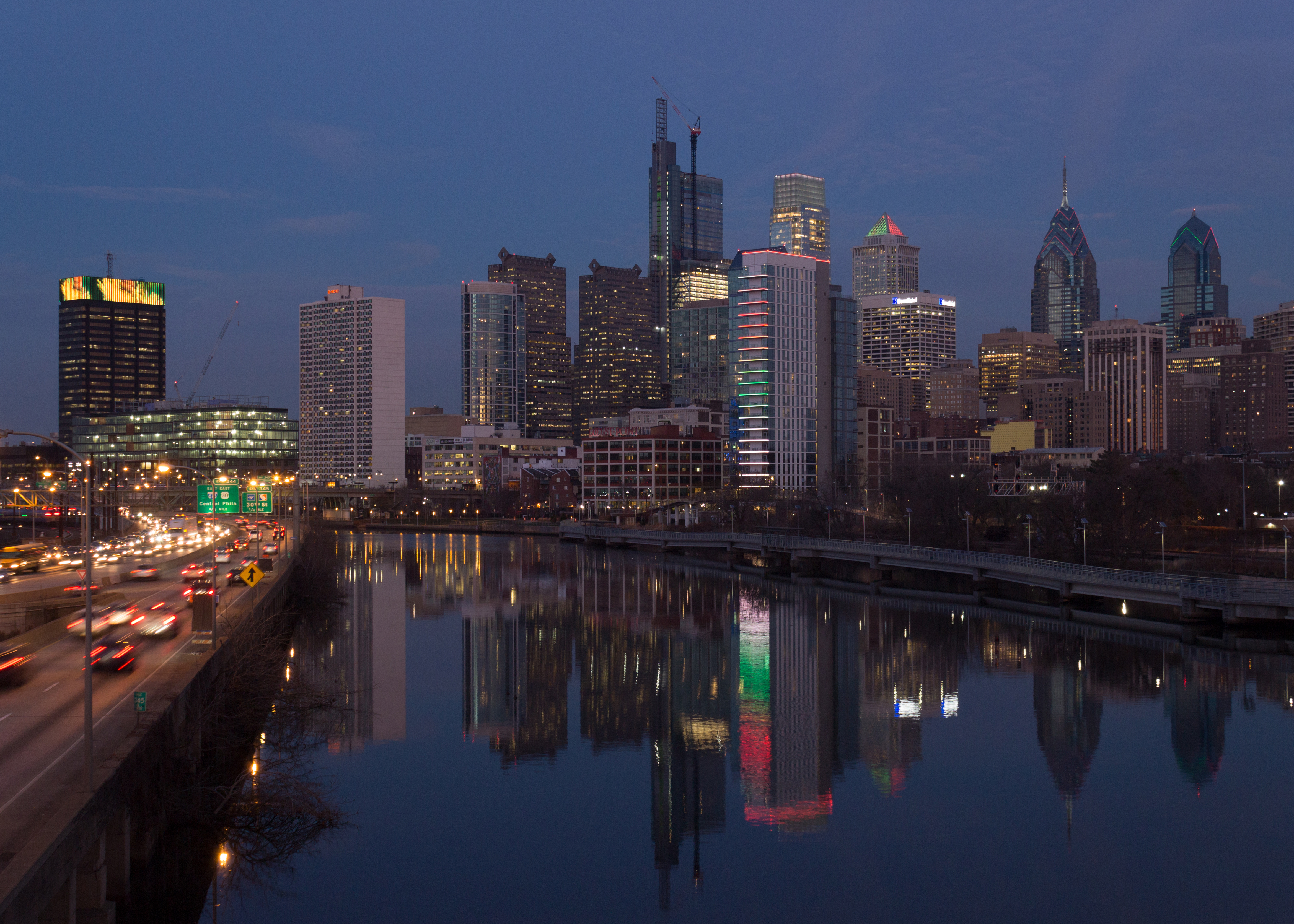 More 2017 Adventures |
Philadelphia, PA → Valley Forge NHP → New Castle, DE → Philadelphia, PA 103.0 mi (165.8 km) |
 Next Day |
I’ve been invited to spend the holidays with some friends on the East Coast, which means the door’s been thrown wide open for a Solstice adventure! Though it’s the shortest day of the year, it’s an important beaver holiday. I’ve spent a good chunk of time with most of my family this year, and I wonder if I might find my missing brother around Philadelphia, the City of Brotherly Love.
My flight arrived at 5:00 AM, which gave me plenty of time to wander in the calm of a chilly Philly morning, munching on hot, local pretzels! My first stop: Independence Hall, the birthplace of America, where the thirteen original colonies ratified both the Declaration of Independence and the Constitution! Though my teeth chattered the whole time, I like to think they were applauding the all-American sunrise!
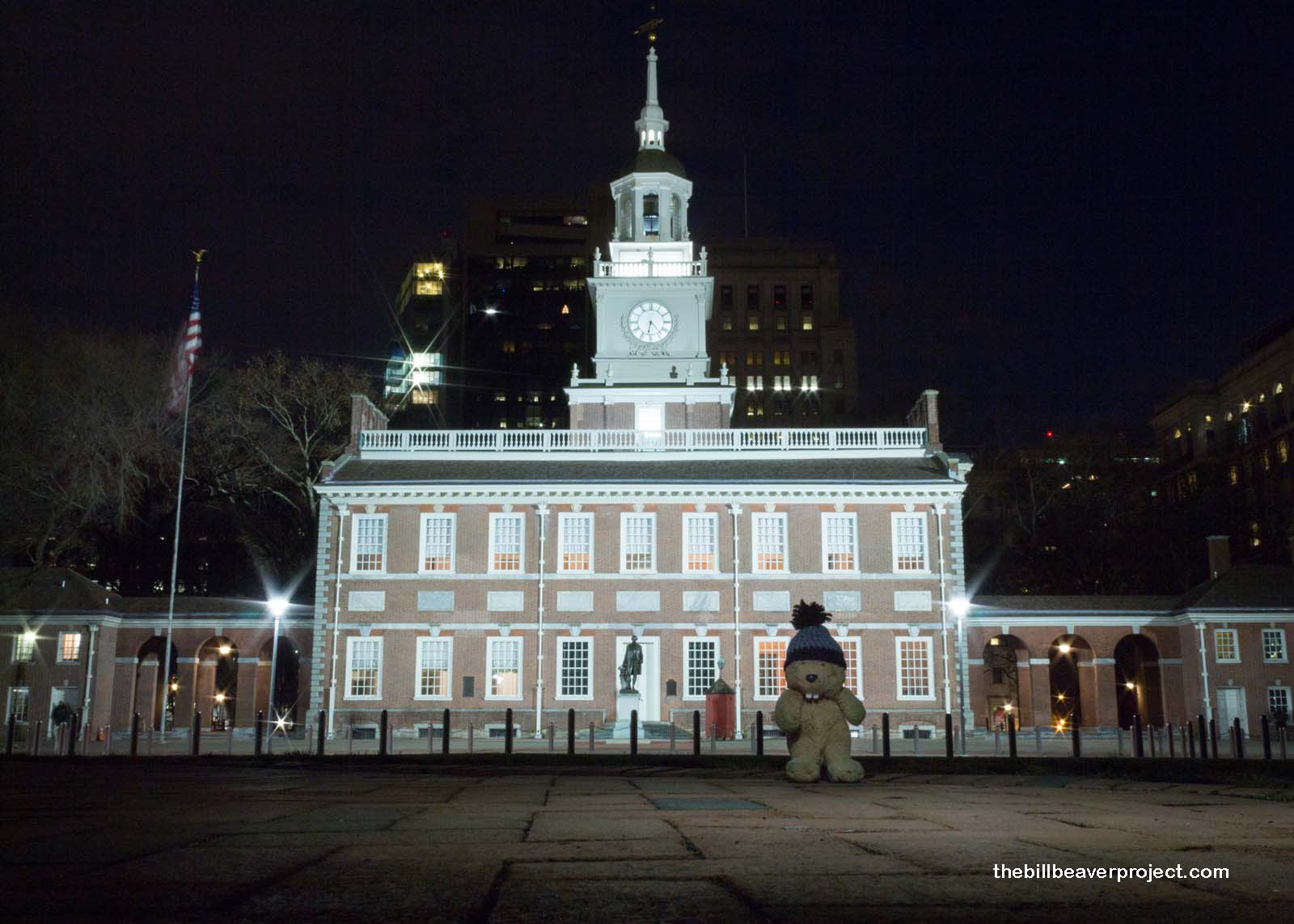 |
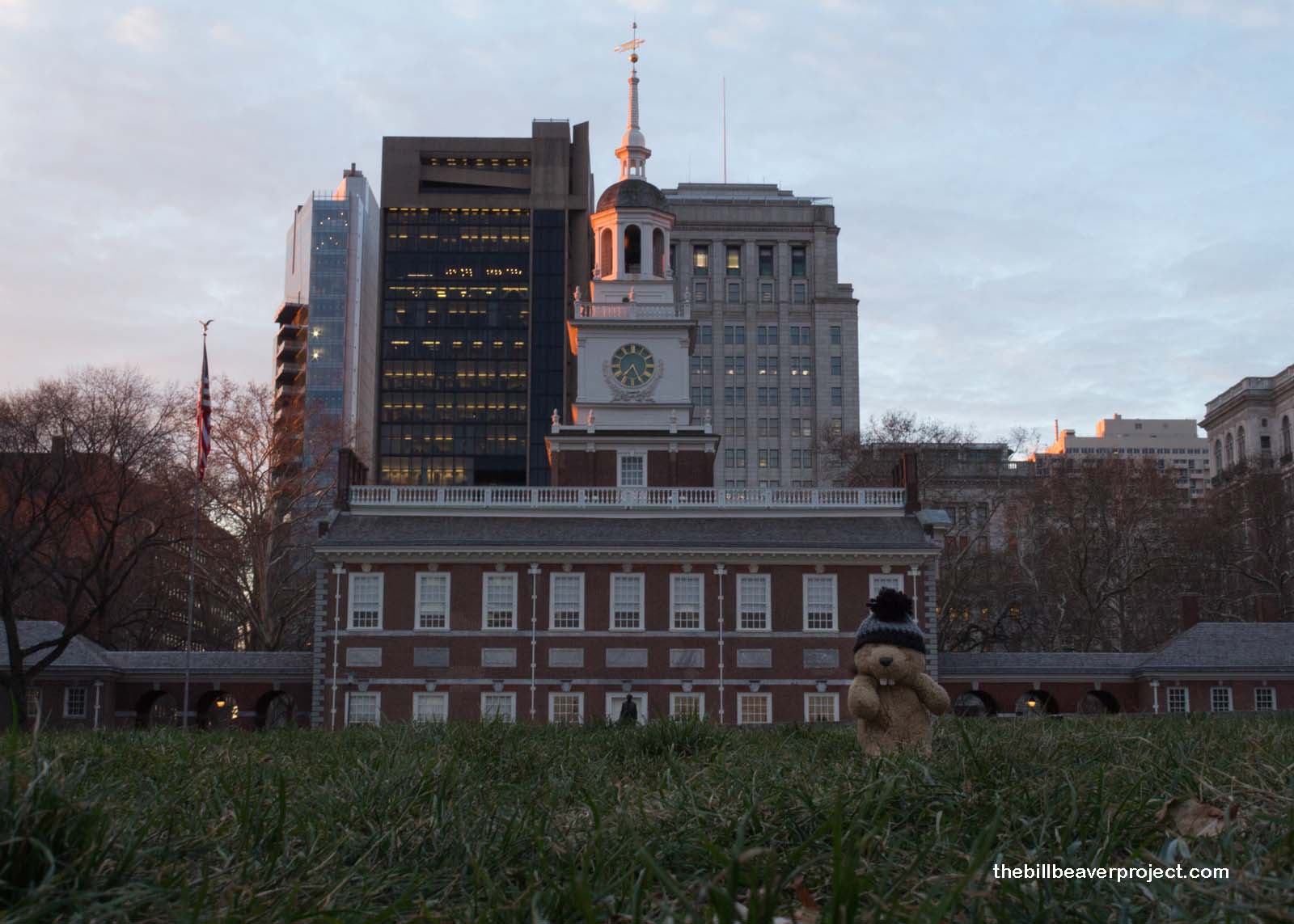 |
Between dawn and the start of the tour, I wandered the grounds to see what else was on display. Not far off, I found the excavated foundation of the President’s House, where George Washington spent his two terms in office and John Adams spent the last year of his, before Washington DC and the White House became the presidential HQ! There was a really interesting exhibit about American slavery surrounding the house with looping videos about presidential slaves, like Hercules the chef, who eventually escaped from George Washington’s estate and disappeared, never to be heard from again! It definitely didn’t paint the first president with cherry-colored glasses!
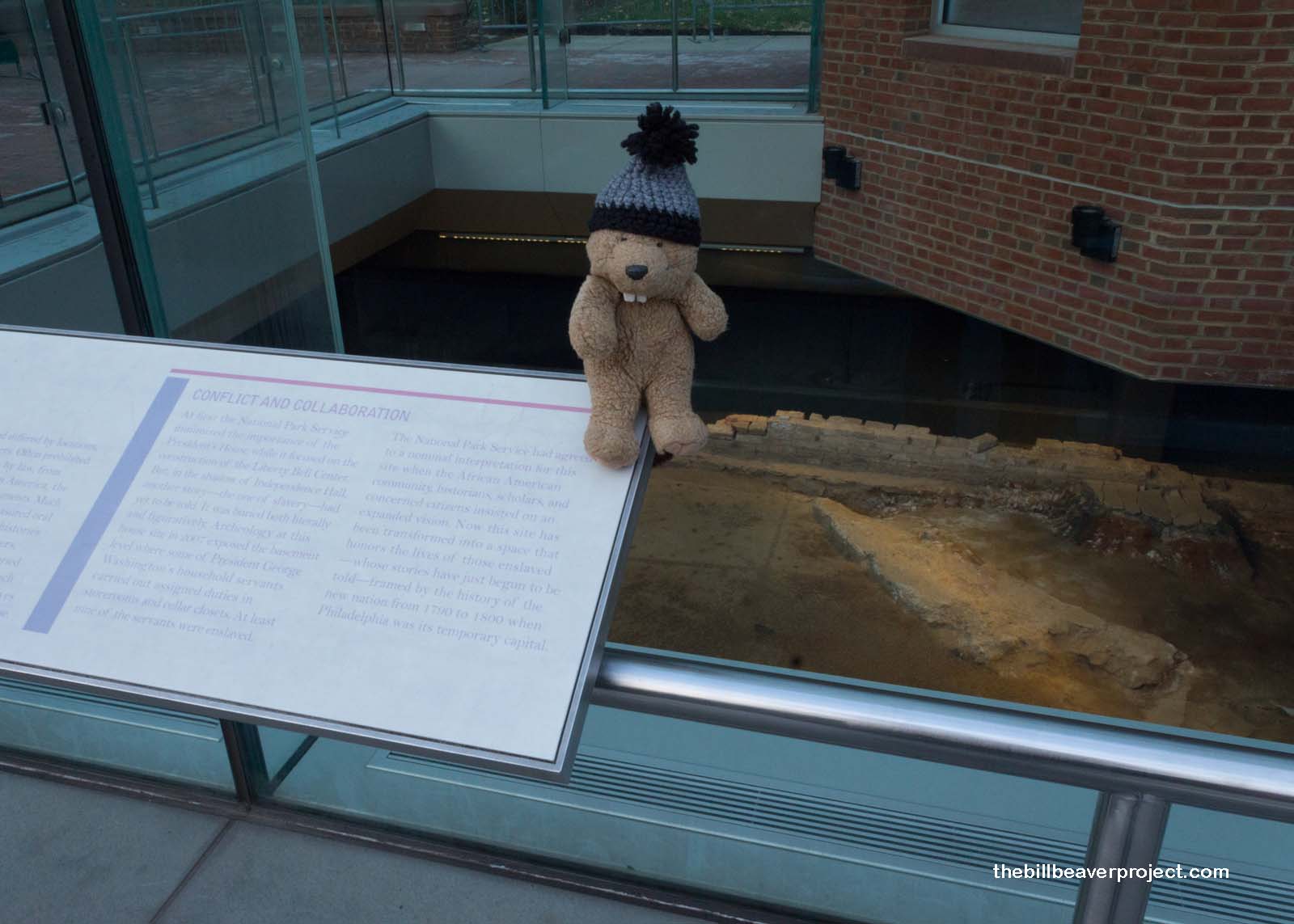 |
But thank goodness the historians have the right to express those beliefs, thanks to the First Amendment of the Constitution, memorialized at the edge of Independence Mall. Philadelphia is home to the National Constitution Center, a museum I would dearly love to explore when I have more than a layover’s worth of time. For now, I’ll just have to settle for a tour of Independence Hall itself. Oh darn.
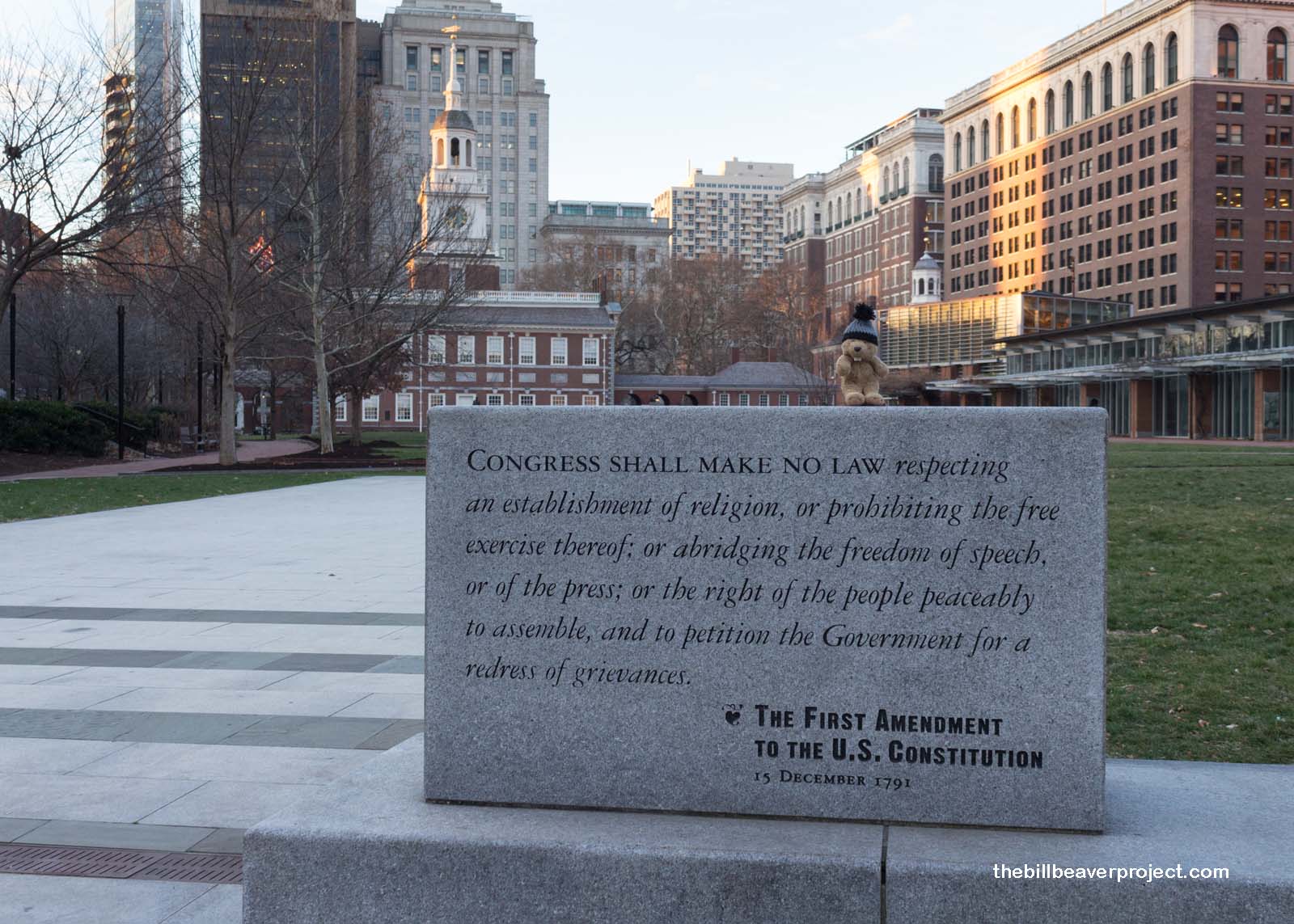 |
The tour started at 9:00, a small group of about fifteen history buffs. First, we got to see the old Supreme Court room, equipped with the waist-high cage where defendants and witnesses would stand. That is why we say folks “take the stand” in court!
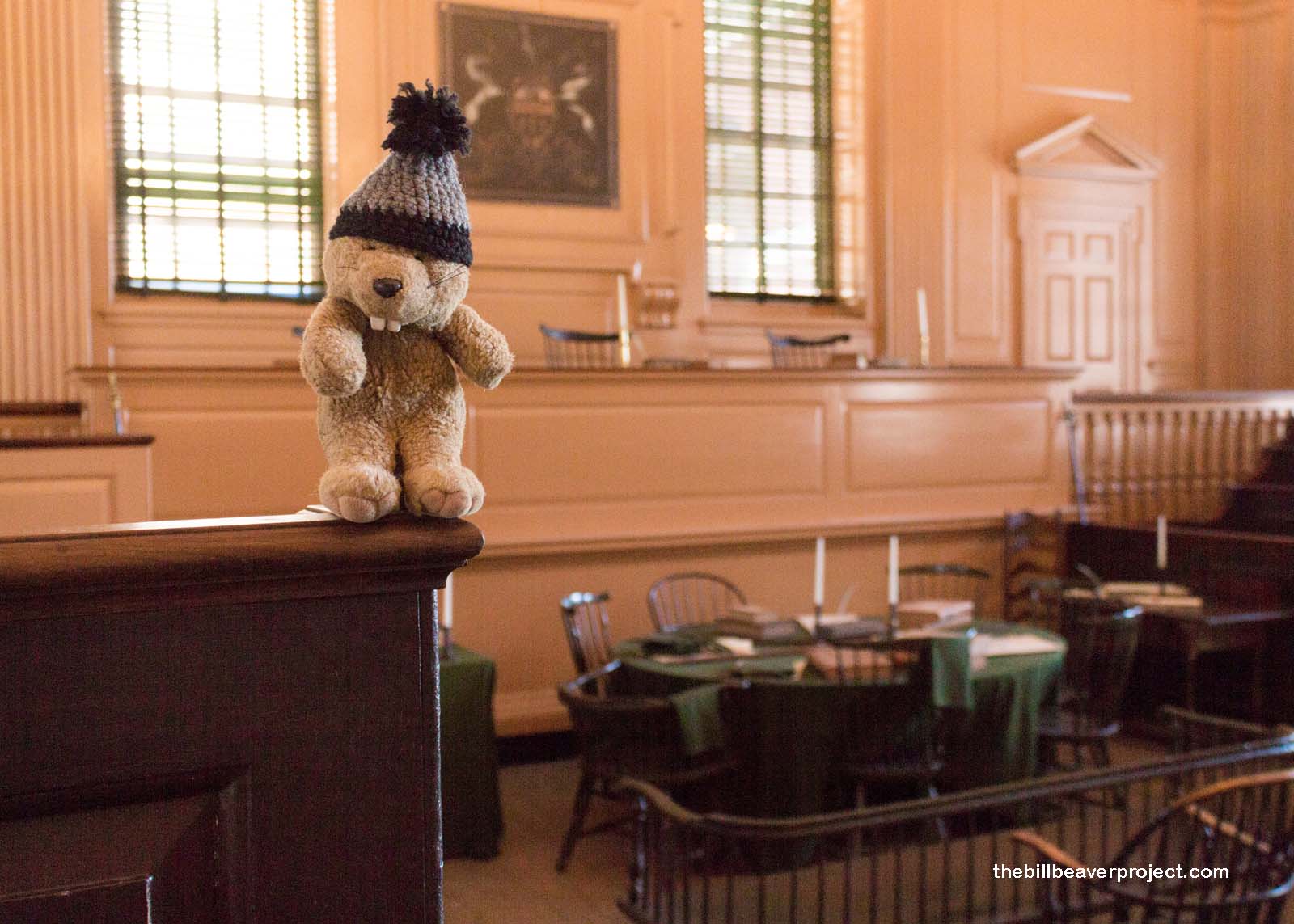 |
Across the hall, we entered the room where America was penned into existence! Here, the colonial delegates debated and debated their policies in the newly formed Union, but eventually signed both the Declaration of Independence to break free of English colonial rule and the Constitution to set the framework for how the new country would run!
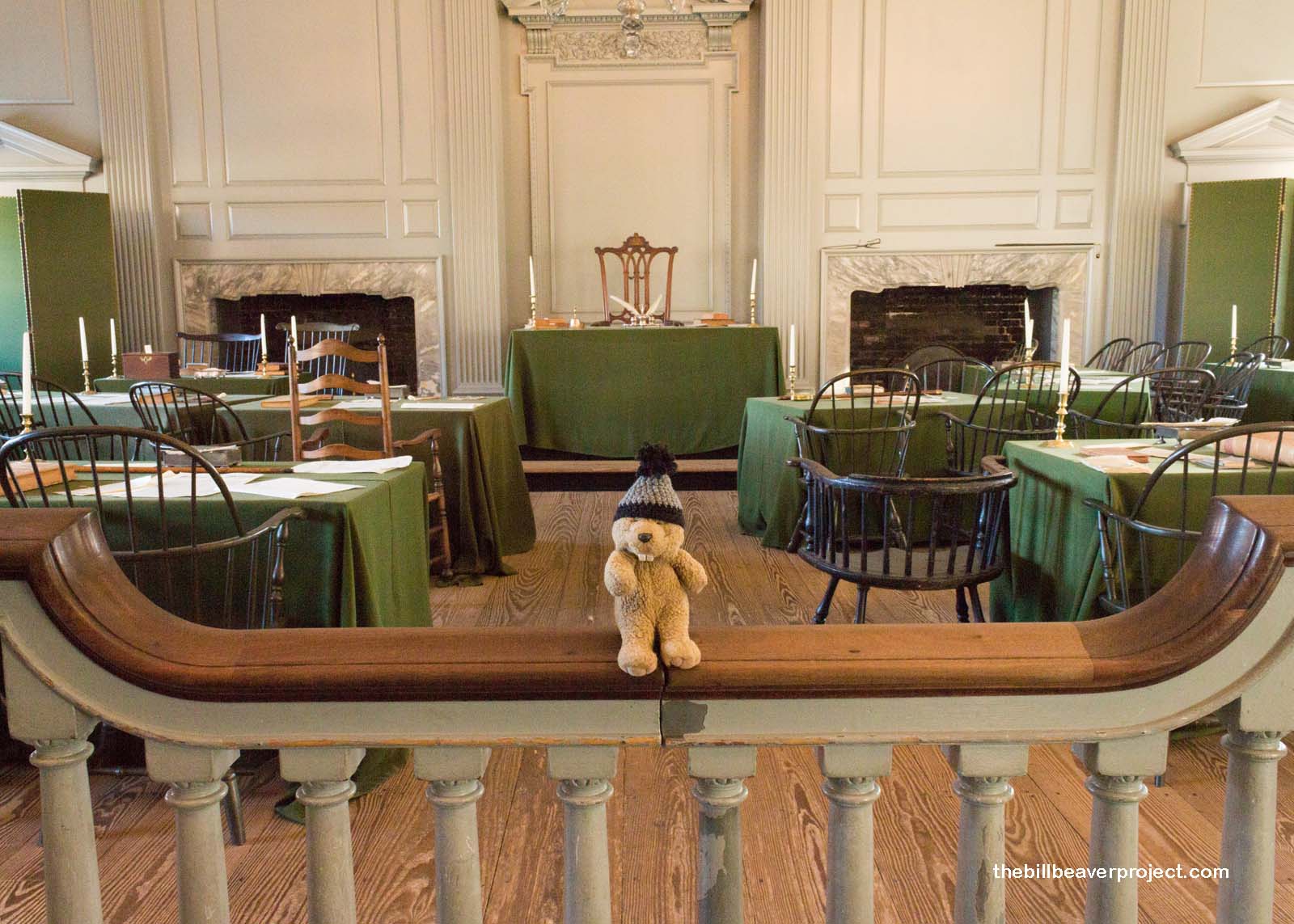 |
Once the tour finished up, I wandered over to the Liberty Bell Center to see the namesake bell. Third in a series, and weighing in at one ton, this bell announced the first Continental Congress, victory at Lexington and Concord, and the reading of the Declaration of Independence! It was originally called the Statehouse Bell, but it was adopted as a symbol of the abolition movement and renamed the Liberty Bell. Today, it hangs in state just outside Independence Hall, because it has cracked twice and can ring no more. Nevertheless, it’s held onto its majesty and splendor, and I was super lucky to see it before the first crowds corralled in to do the same.
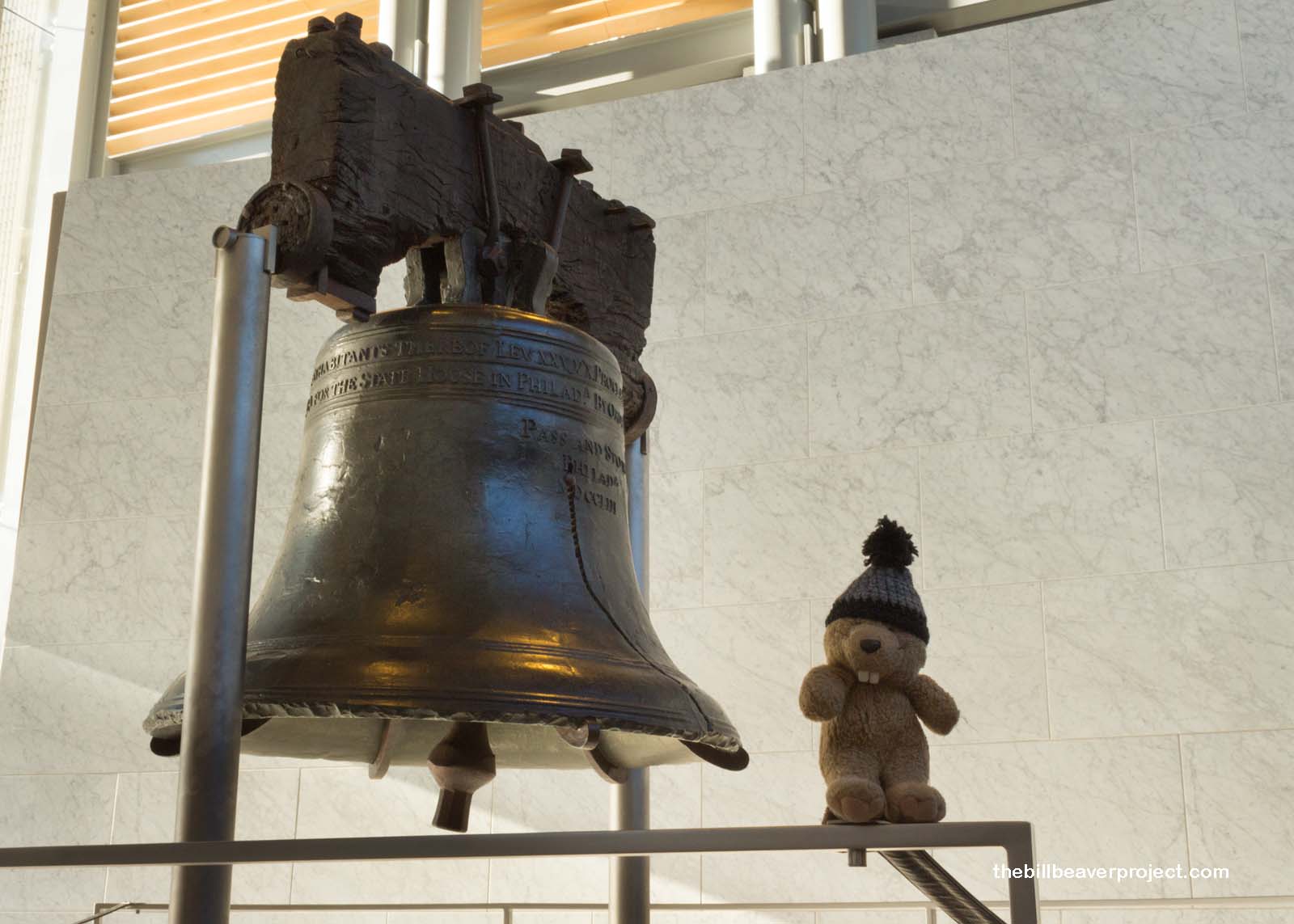 |
To escape the crowds and take advantage of the time of year, I headed north to Valley Forge, site of one of the most toughest winters of the Revolutionary War! Like today, it wasn’t the coldest winter on record, but it was the poorest. They crammed into tiny cabins and got daily rations of a pound of beef, fish, or pork, a pound of bread or flour, and the option to add peas, beans, or rice! It was a good thing they never had to fight here; this was a reconnaissance spot where they could safely spy on the British in Philadelphia while being far enough away to avoid surprise attacks!
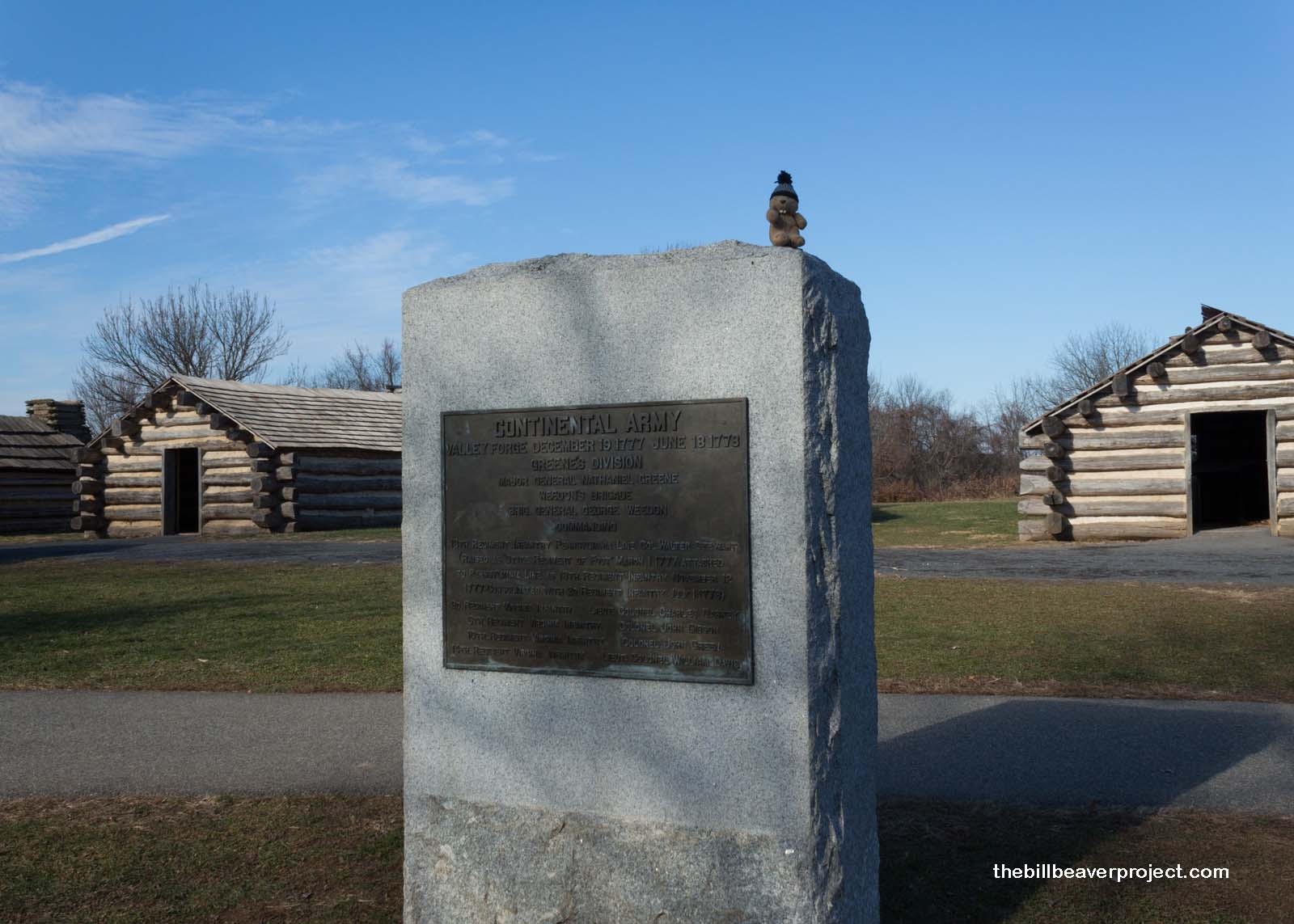 |
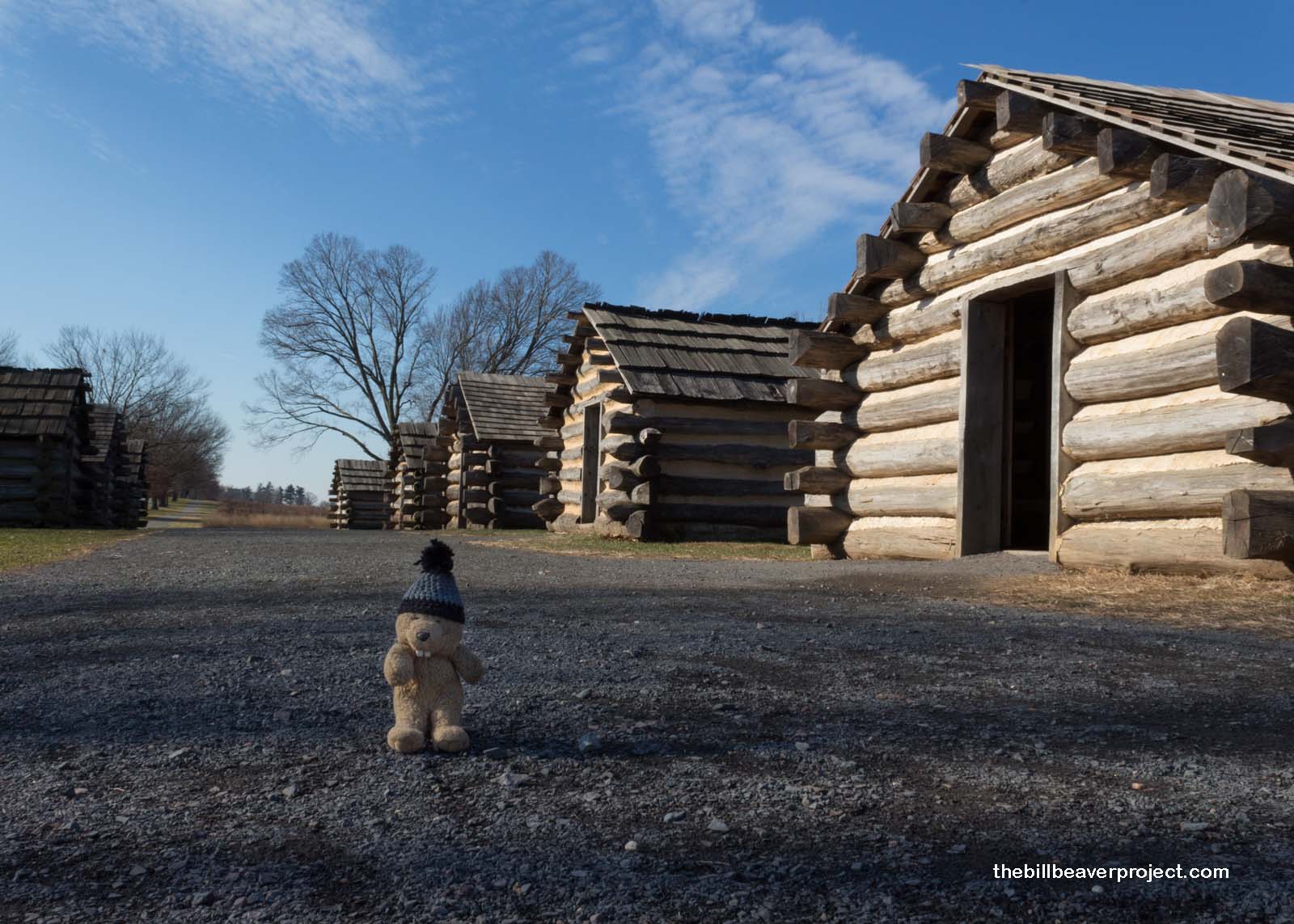 |
There is a huge arched memorial here honoring the sacrifices of these soldiers. It was designed to resemble the Triumphal Arch of Titus, which is located in Rome, and constructed between 1914 and 1917. It’s an important monument, commemorating how this hardship transformed the Continental Army from a ragtag team of rebels into a well disciplined fighting force!
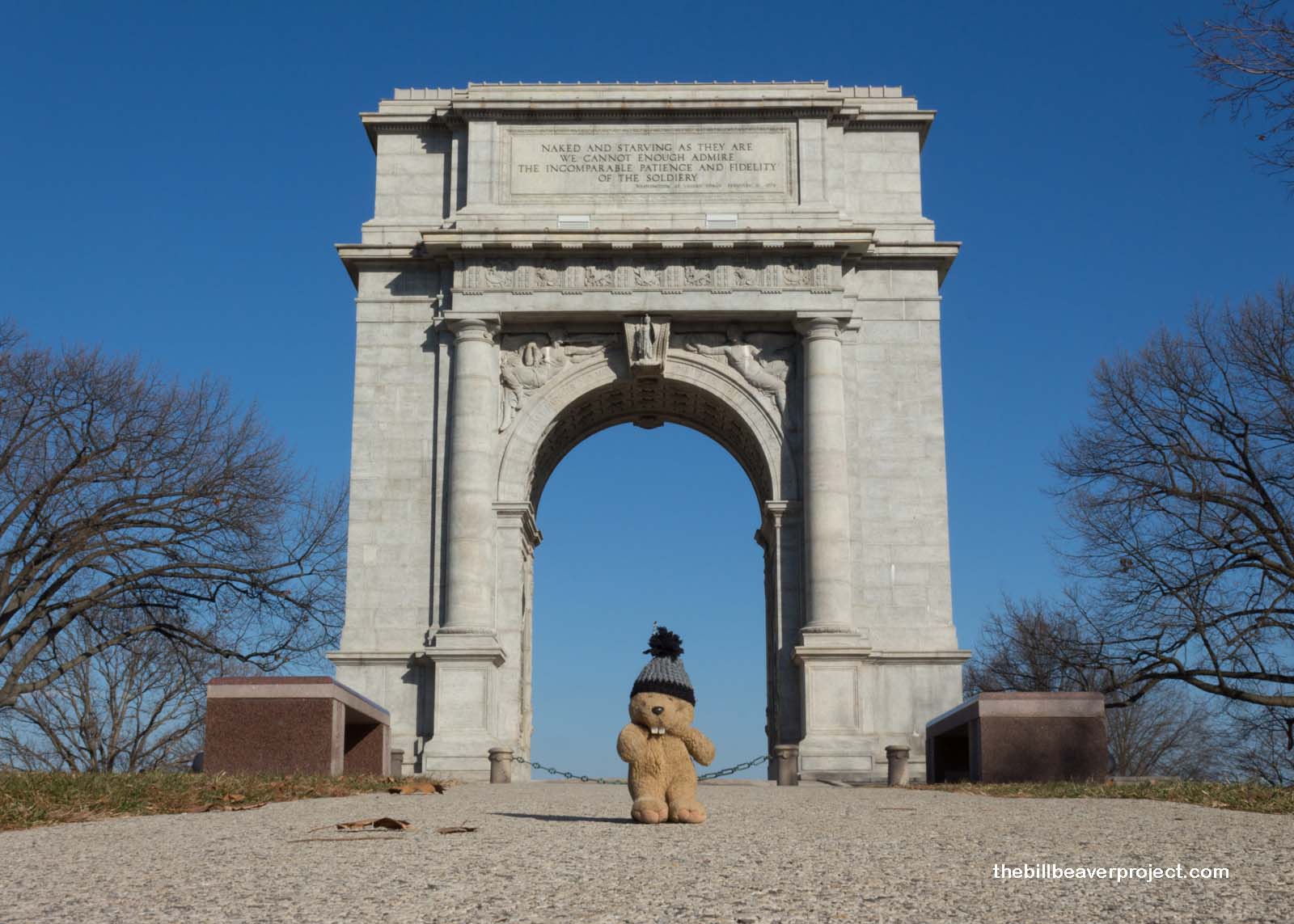 |
There were also statues assembled throughout the park, commemorating the individual leaders who made such a transformation possible. There was an equestrian statue of General Anthony Wayne, commander of the Pennsylvania line in the Battles of Brandywine and Germantown! There was also a statue of Baron Frederick von Steuben, who had come to America from Prussia and implemented strict drilling and sanitation habits that whipped the demoralized American soldiers into fighting shape!
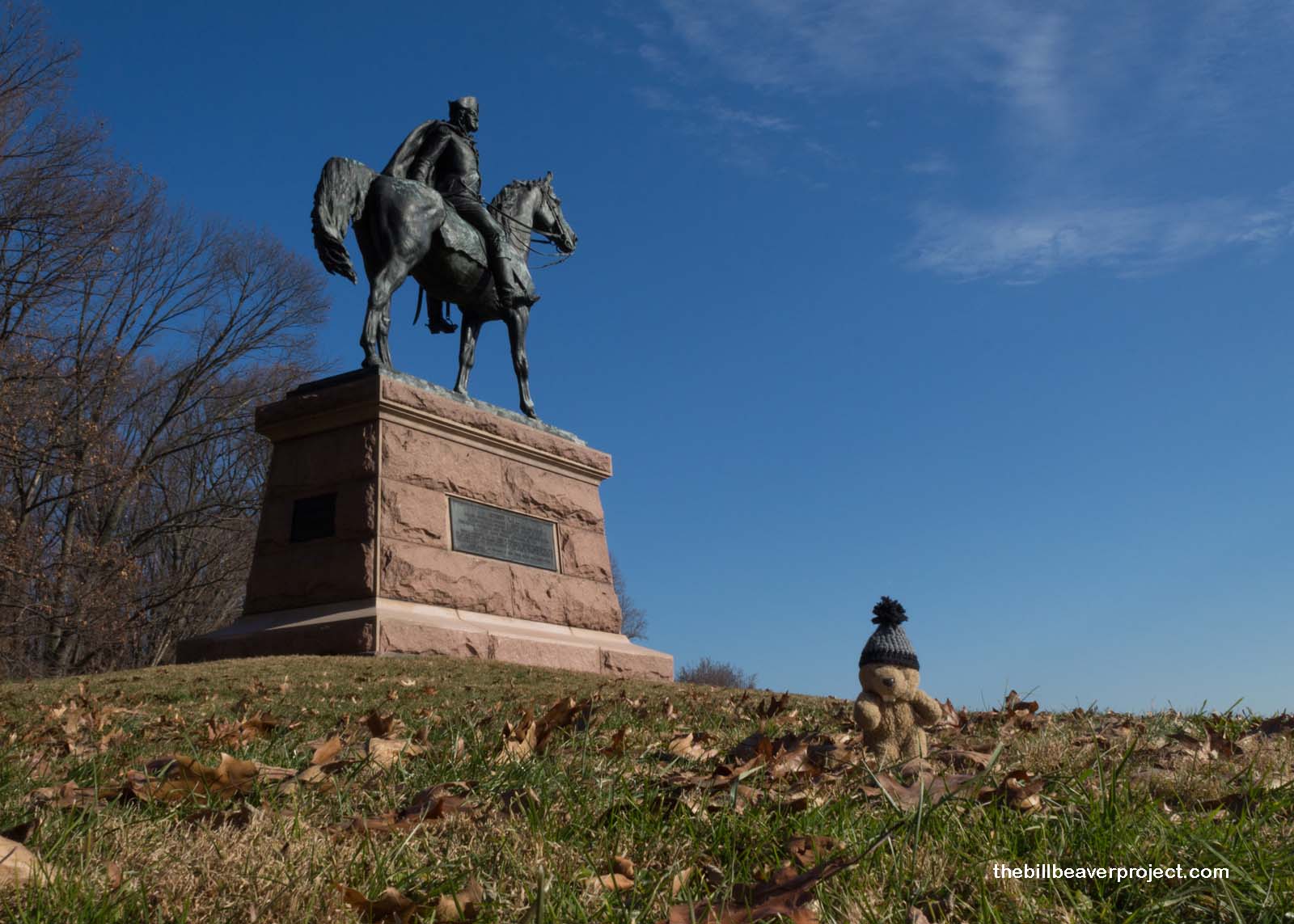 |
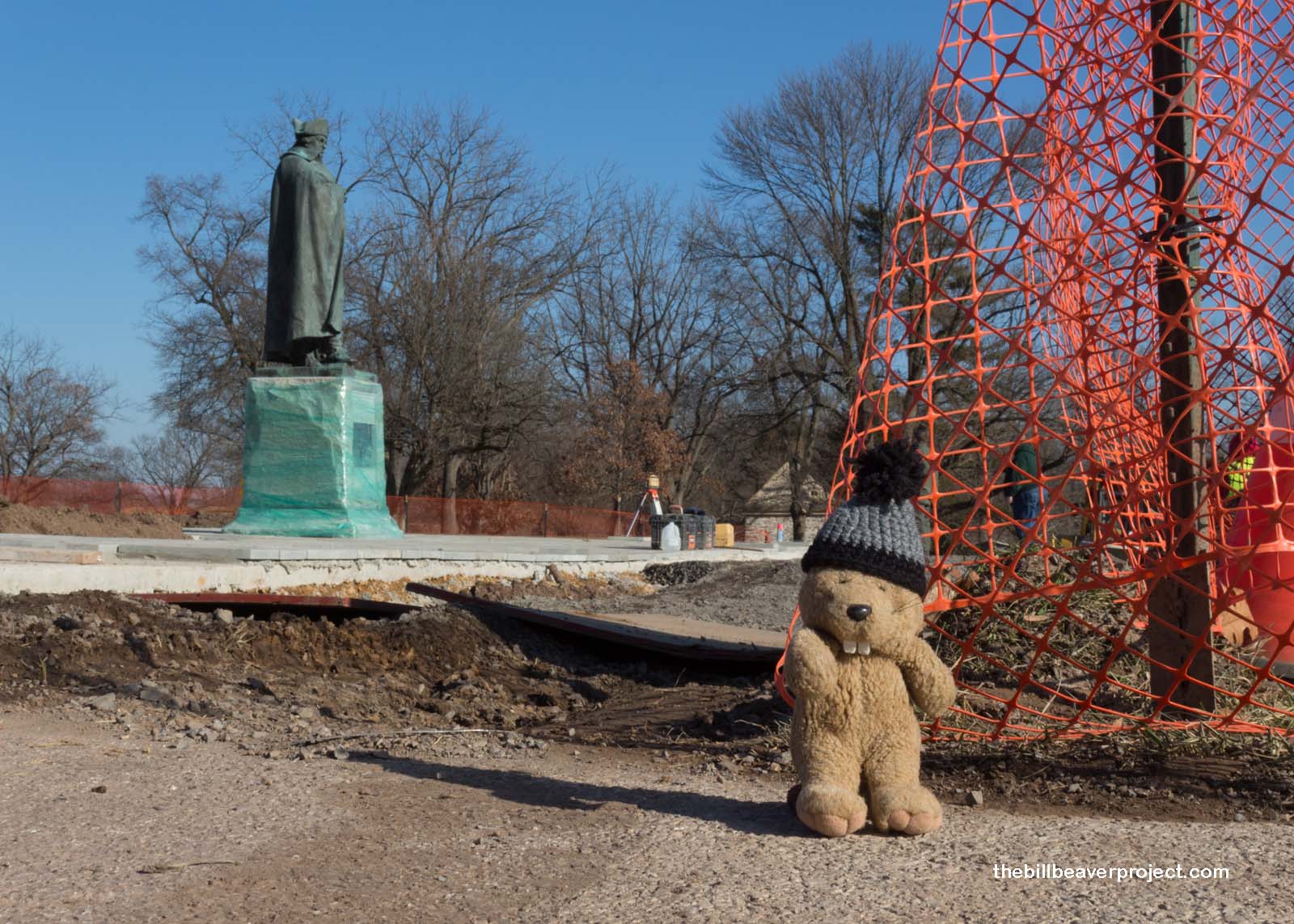 |
But at the center of the action was General George Washington, whose headquarters in the village of Valley Forge were a far cry from his grand estate at Mount Vernon! This house was owned by the Potts family, who also ran the mills and forge along Valley Creek, which gave this spot its name! Though General Washington needed a secure spot to strategize, he didn’t want to act like the British and just occupy the house. Instead, he paid the tenant, a Mrs. Deborah Hewes, and moved in his whole family, 15-25 officers, and all their servants and aides, making this tiny home pretty darn crowded, but probably warmer than the soldiers’ cabins!
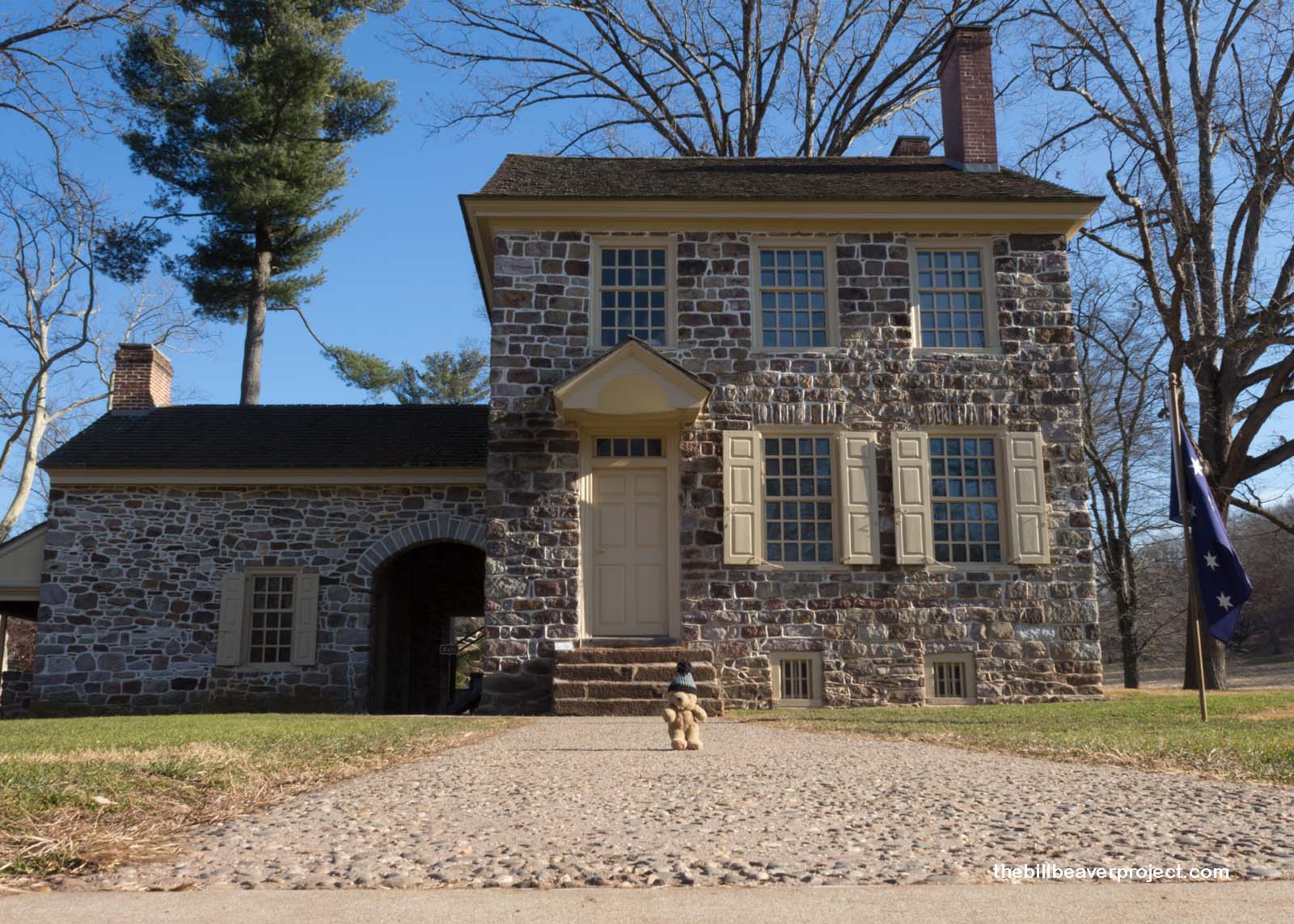 |
After grabbing some lunch near the Washington Memorial Chapel, I was southbound to a new state, the First State, which happens to be the State of Delaware! Specifically, I was seeking a mysterious cave in Beaver Valley, a unit of First State National Historical Park!
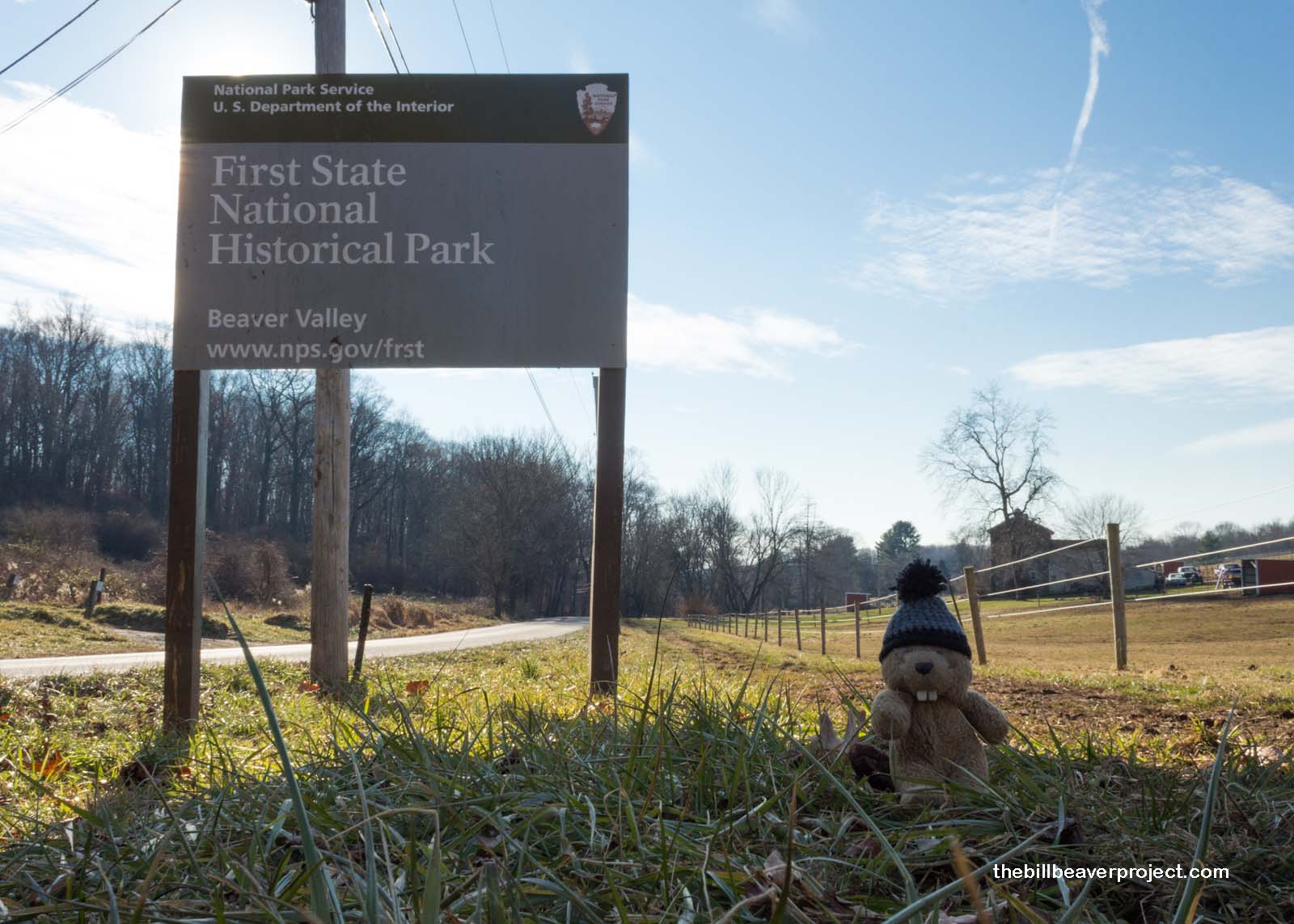 |
The Beaver Valley Rock Shelter Site is Delaware’s only documented cave, and as such, its address is restricted! To get there, I had to do a bit of hustling on foot through quiet woods and along a gently burbling stream.
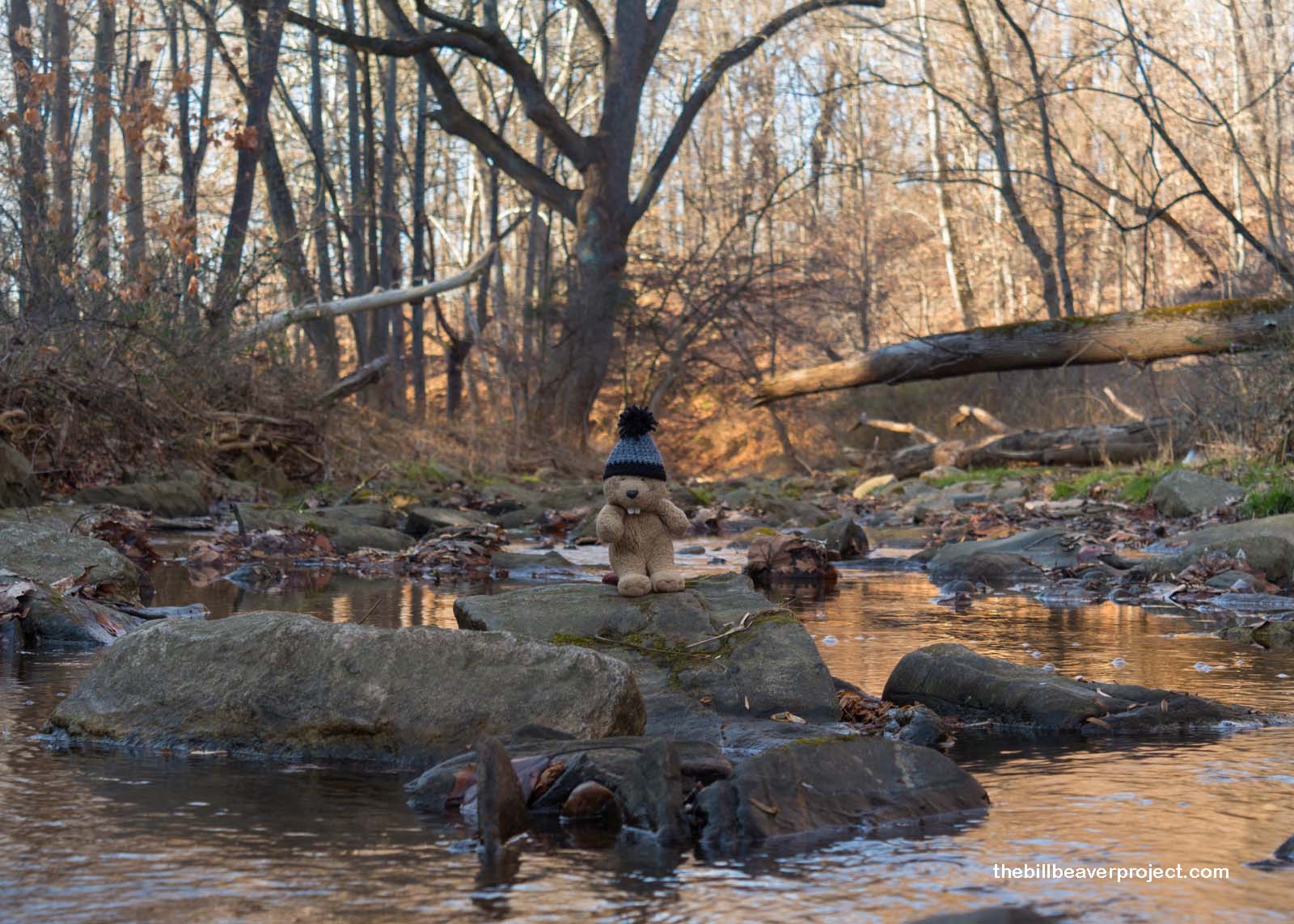 |
The cave was tucked up on a hill right by the road, scarcely more than an outcropping at first glance, but the site has been in use by humans for hundreds, if not thousands of years! The Lenape would use this cave for both shelter and storage, though no traces of them remain after all these years.
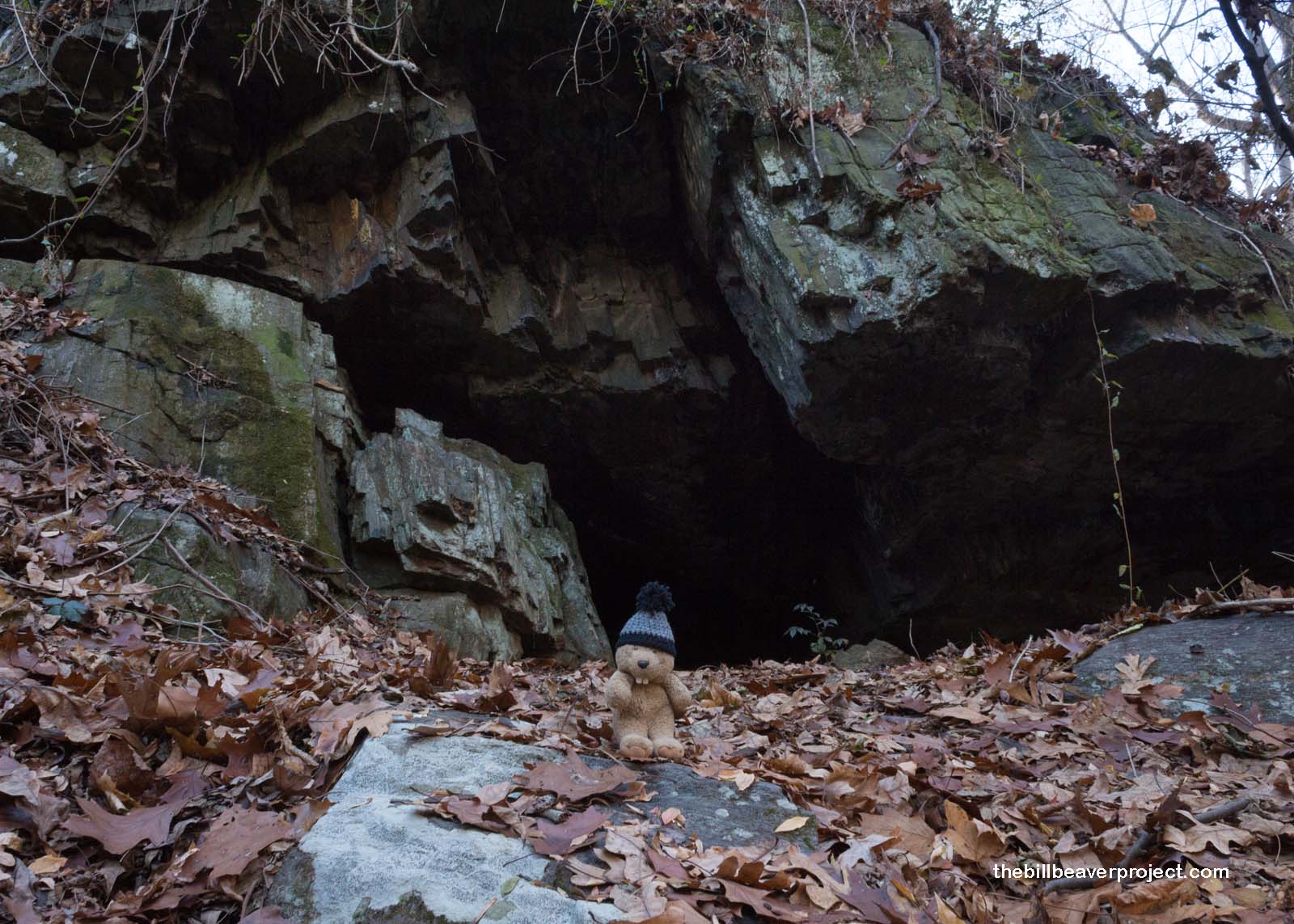 |
I went inside the damp cave, a trickle of water seeping out from remote places within. I expected more garbage and graffiti and was very happy that there was just one small tag on the wall. I was also happy not to encounter any hibernating bears. That would have made this trip far more perilous!
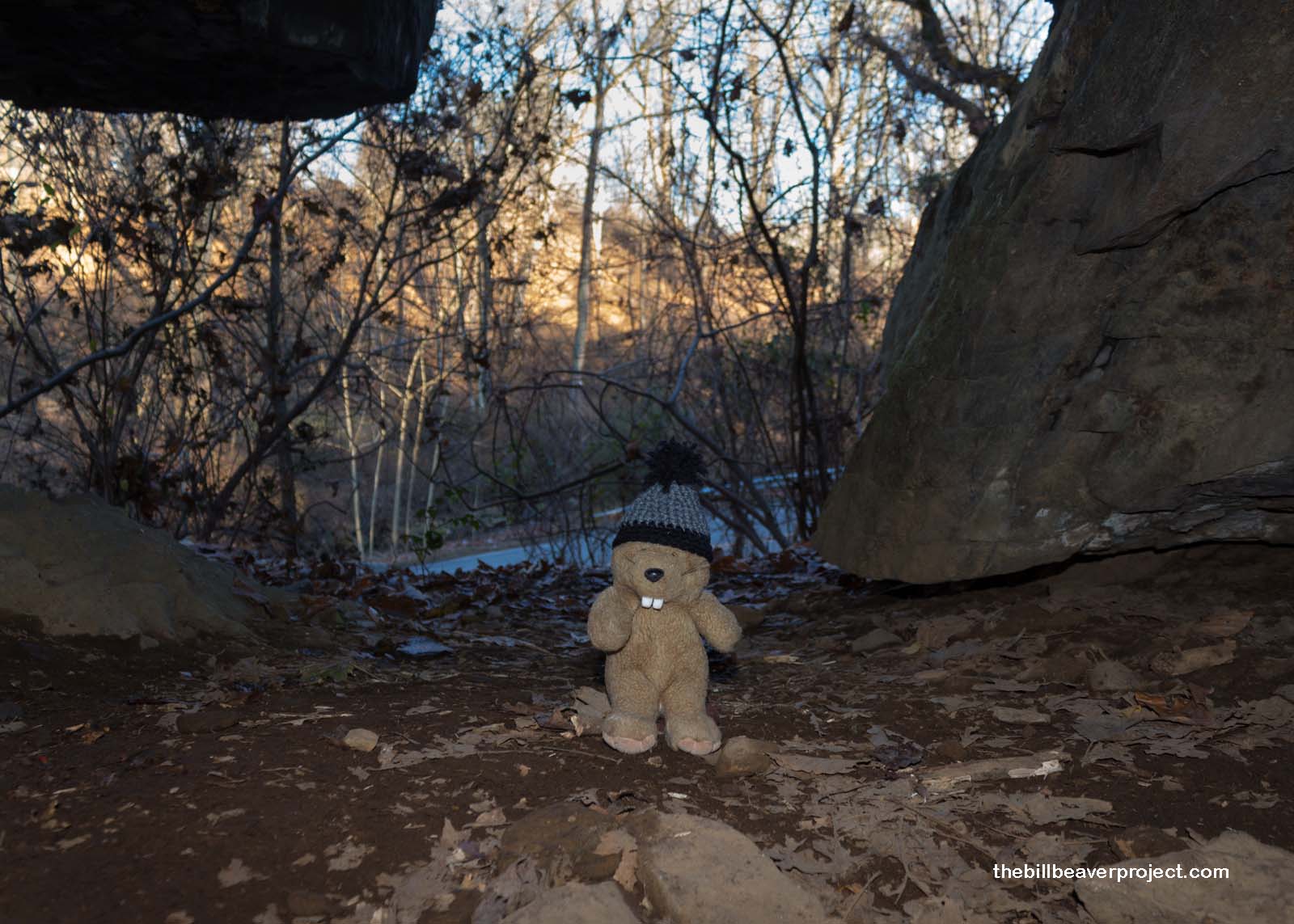 |
The cave itself isn’t very deep, only about 56 feet in. In fact, it was overlooked for many years and Delaware relegated to the only state in the country without a single cave. We can thank George Jackson, a local fan, for adding this humble hiding place to the national cave files in 1958!
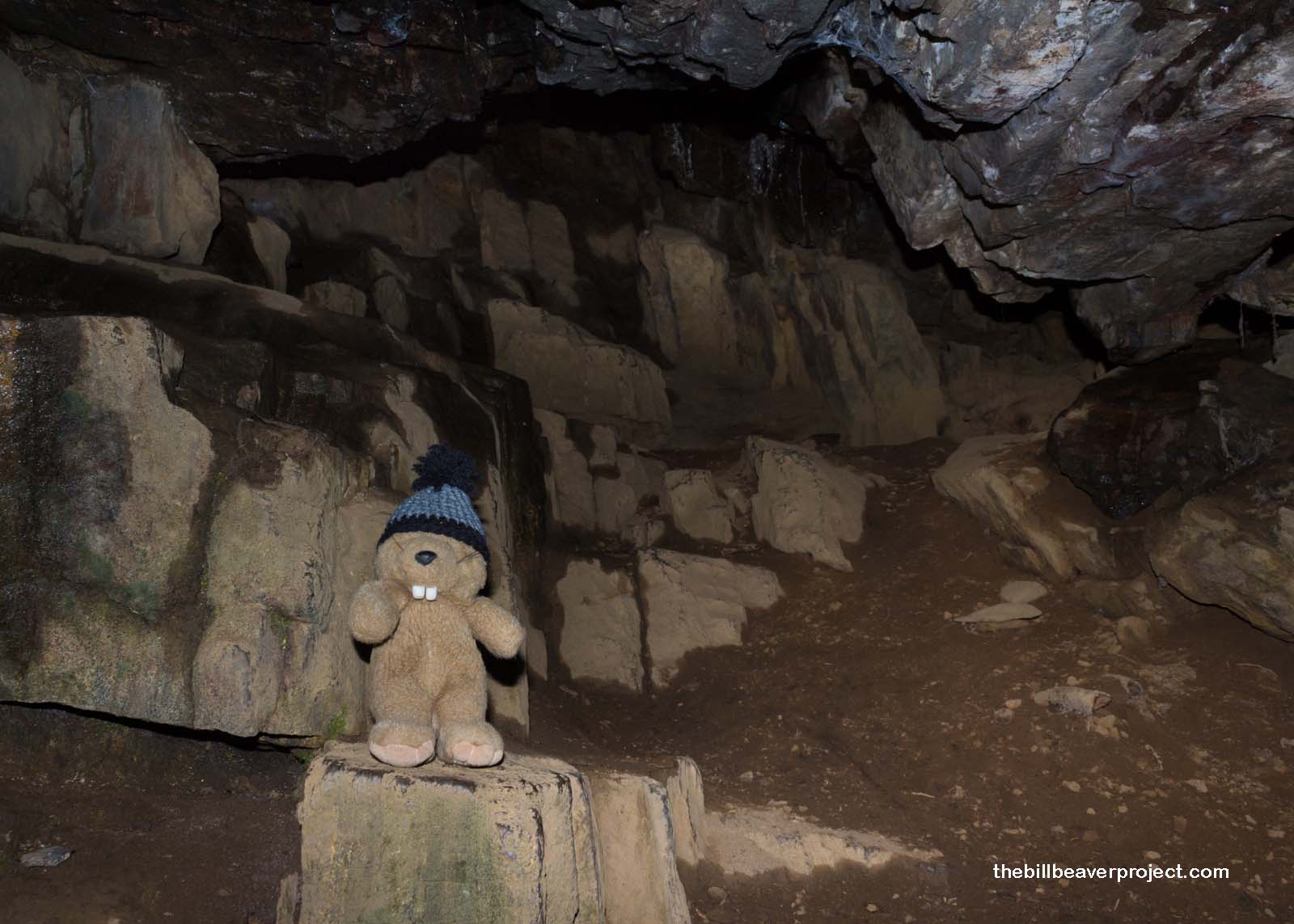 |
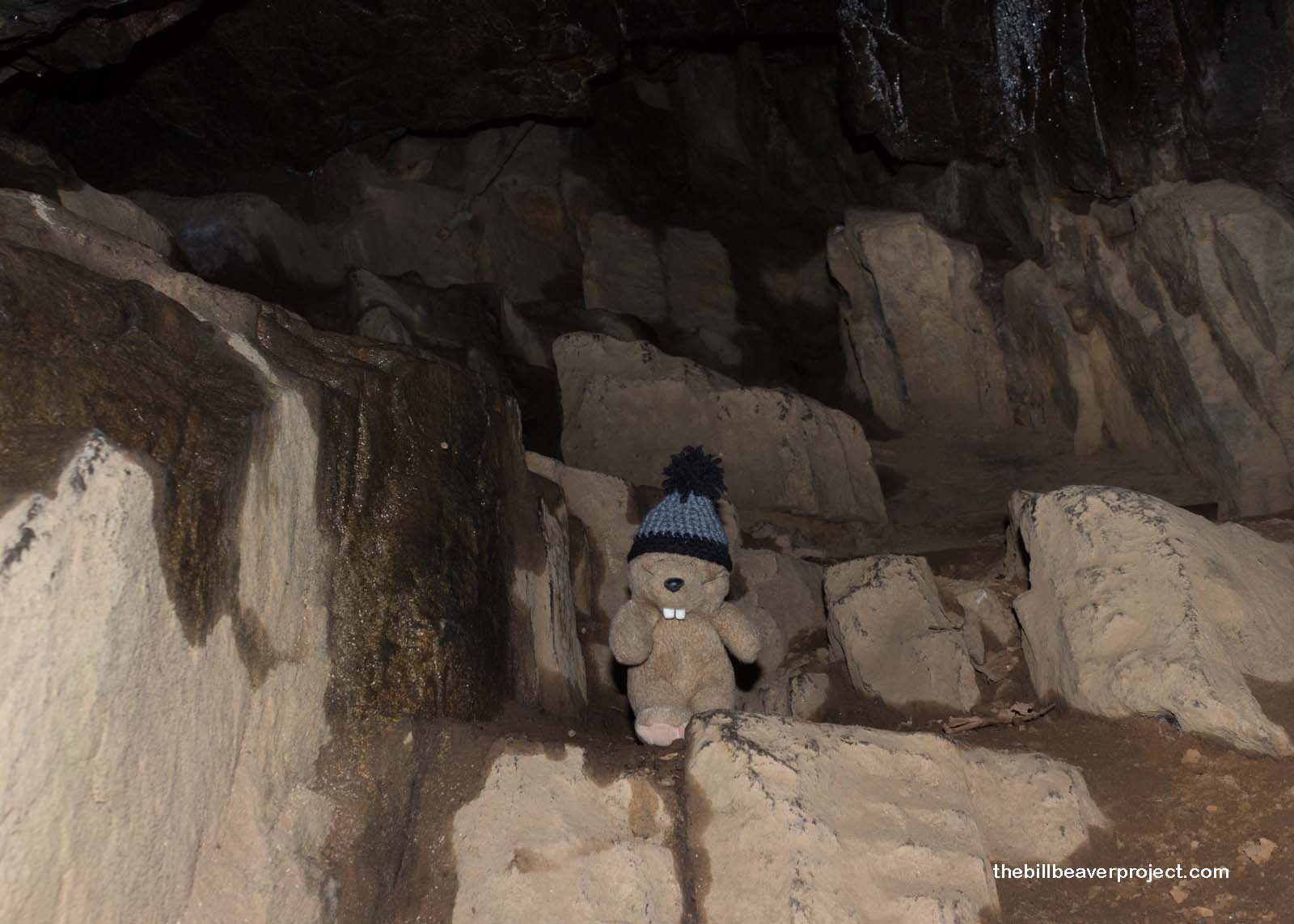 |
After enjoying the parts of the cave I could visit, I headed south just a little further to see another important unit of the historical park: the New Castle Courthouse, where a colonial assembly met in 1774 to declare independence, first from William Penn’s territory of Pennsylvania, then from Britain! It was also the state’s first capitol until threats from the British during the revolution pushed the capital south to Dover!
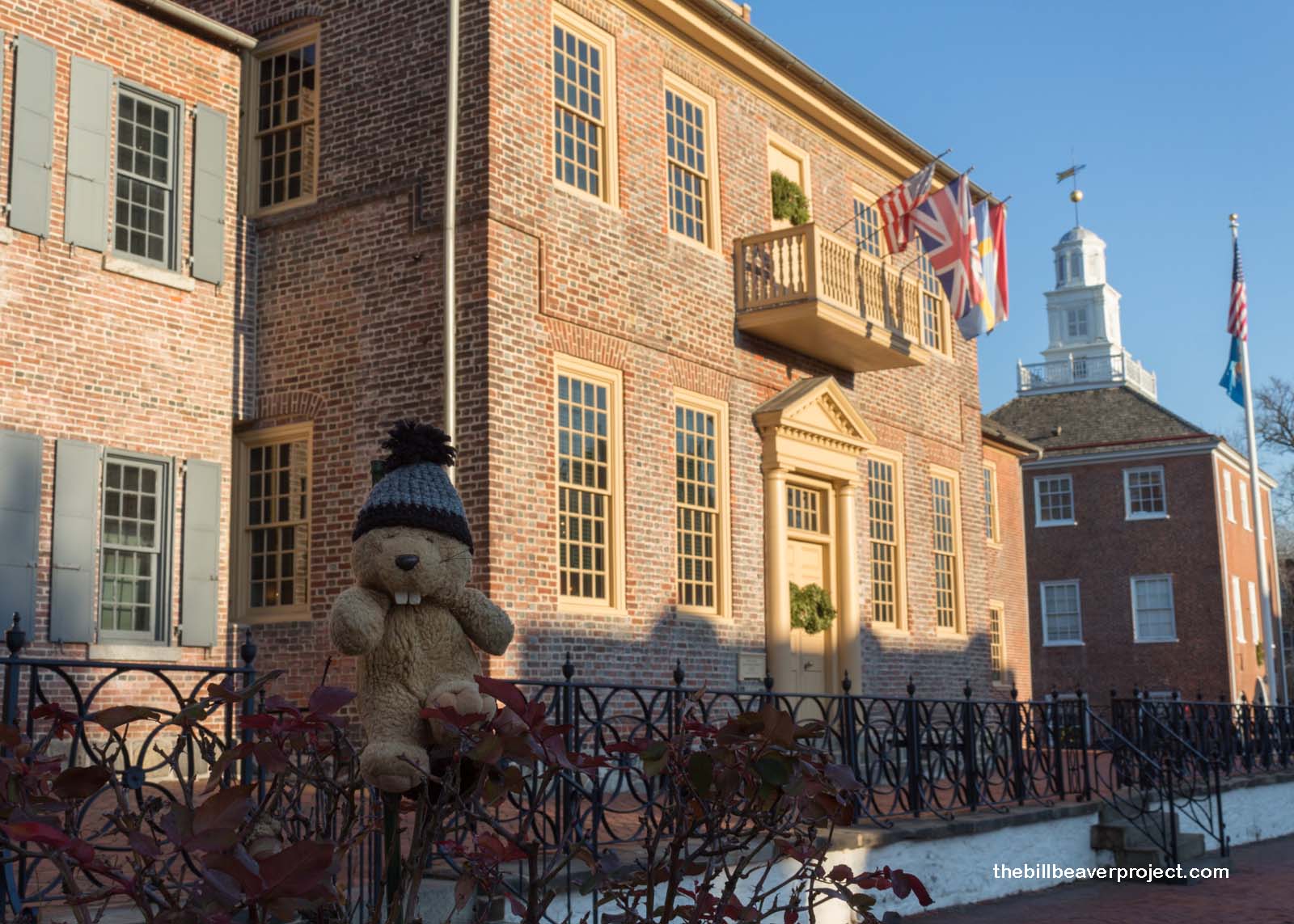 |
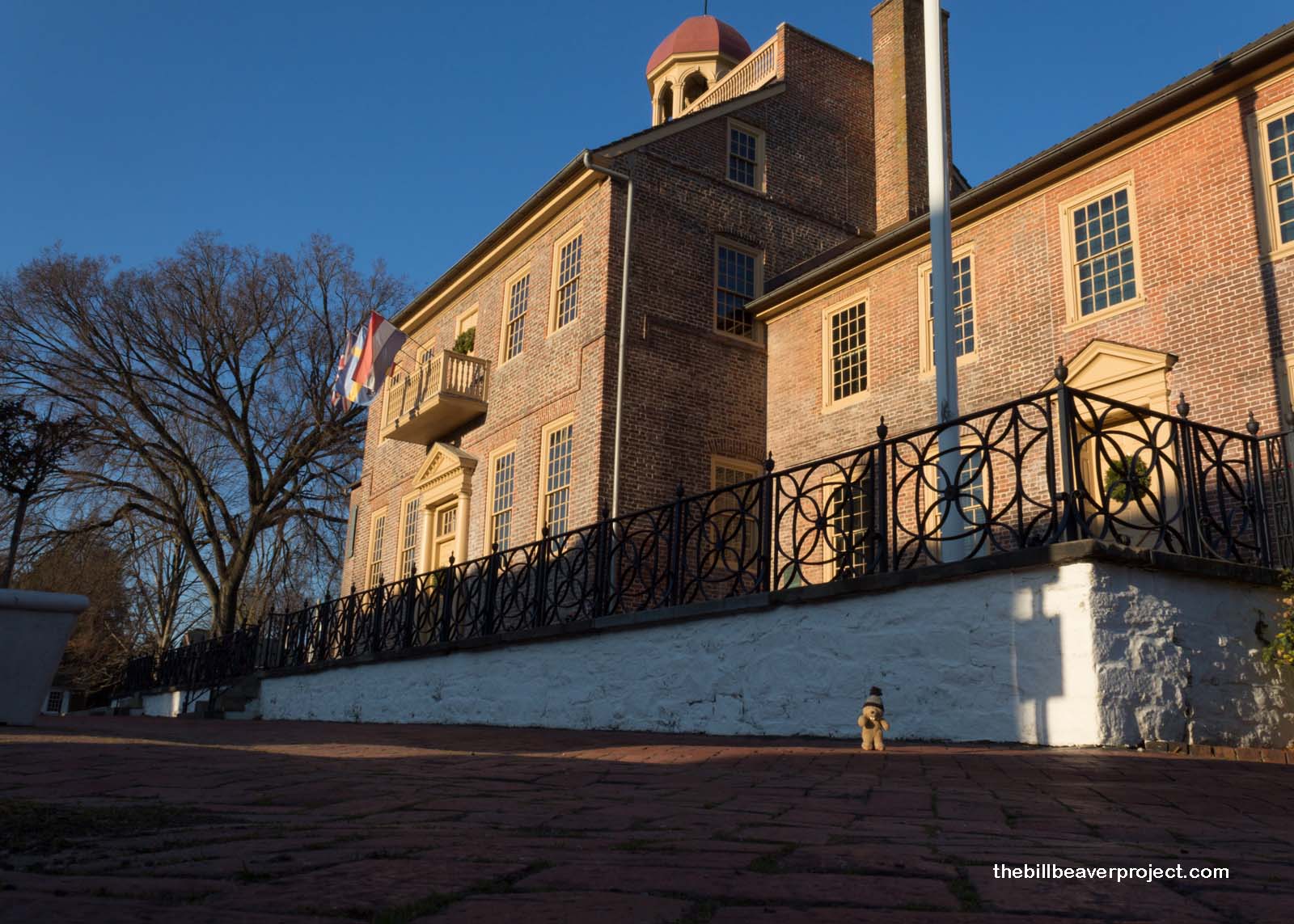 |
This section of the historical park is set up along a grassy area called The Green, which has been a public meeting space since the Dutch called this place home! The sheriff’s house here is the last remnant of Delaware’s early prison system, which makes sense that it would be set next to the courthouse!
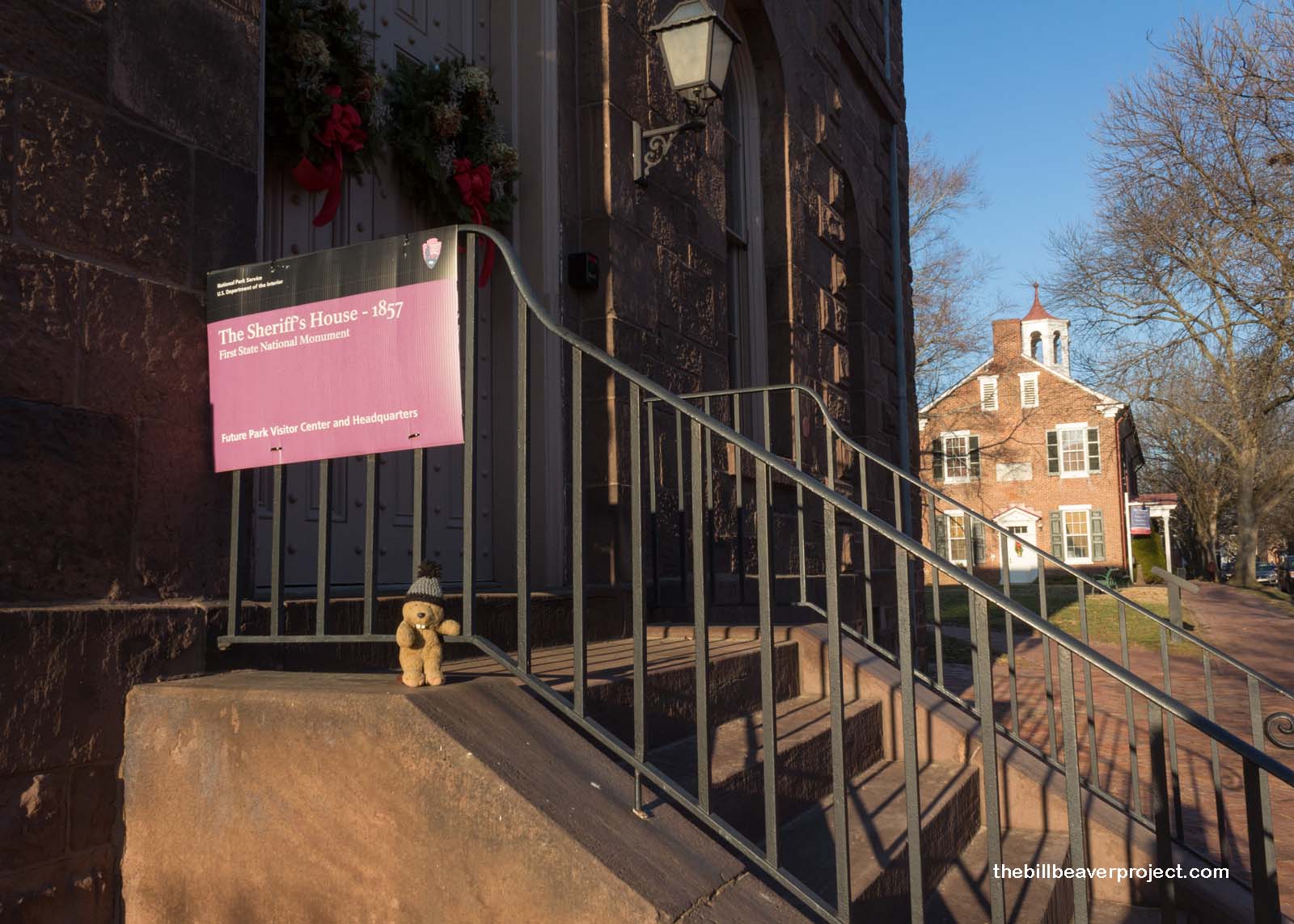 |
Also sensibly placed was the Arsenal, which now houses the New Castle Historical Society! The Arsenal was set up between 1809 and 1811 when threat of a second war with Britain was on the horizon! Here, the US stored cannons and other armament supplies through the War of 1812 and beyond!
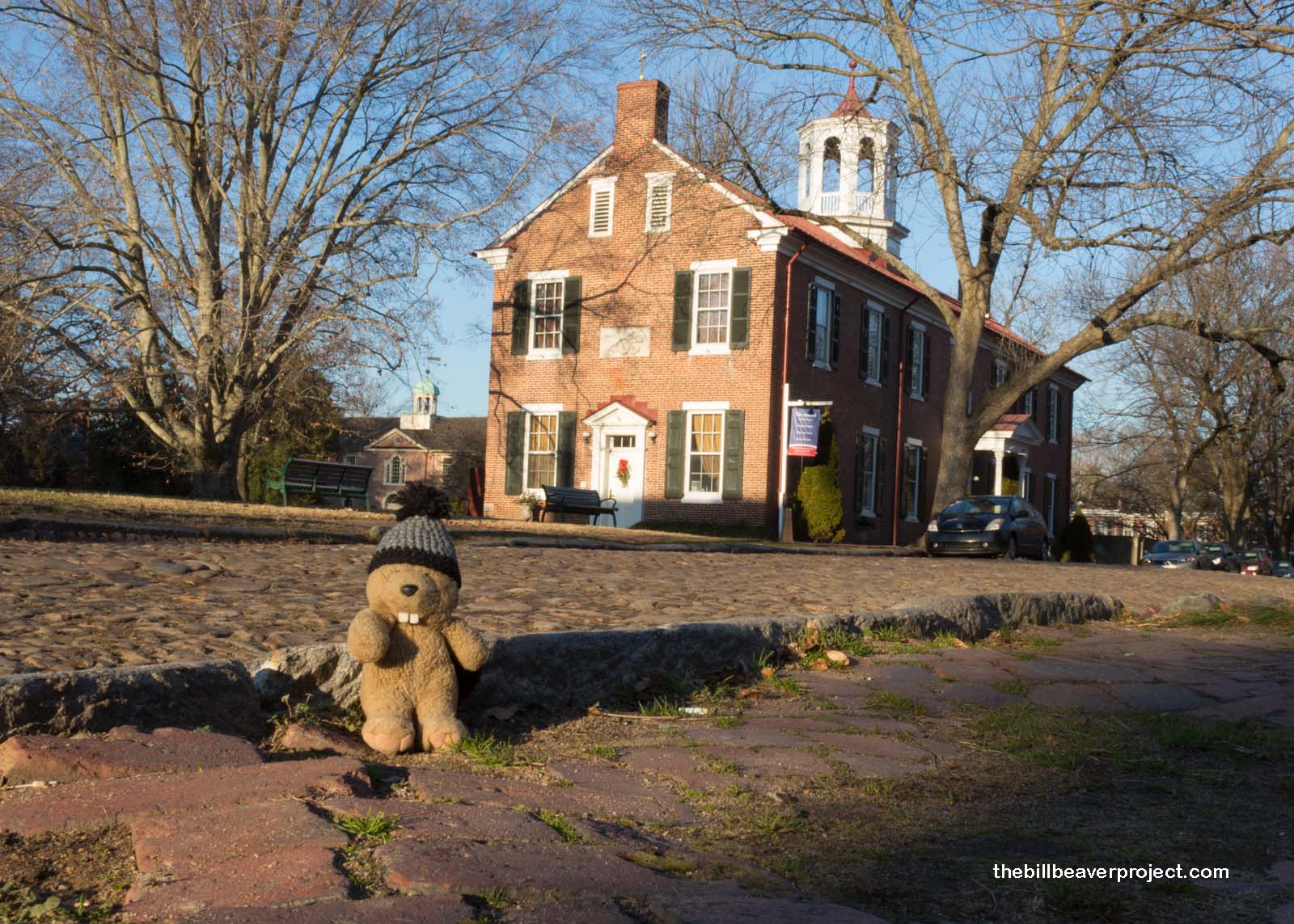 |
To tend to spiritual needs before, during, and after wartime, the Immanuel Episcopal Church on the opposite end of The Green from the courthouse, has conducted services since 1689, making it one of the oldest Episcopal churches in the United States! The Anglican church, a minority religion in the colonies, had a serious crisis of identity when the colonies rebelled, which is why, today, all former Anglican churches in the USA are known as Episcopal!
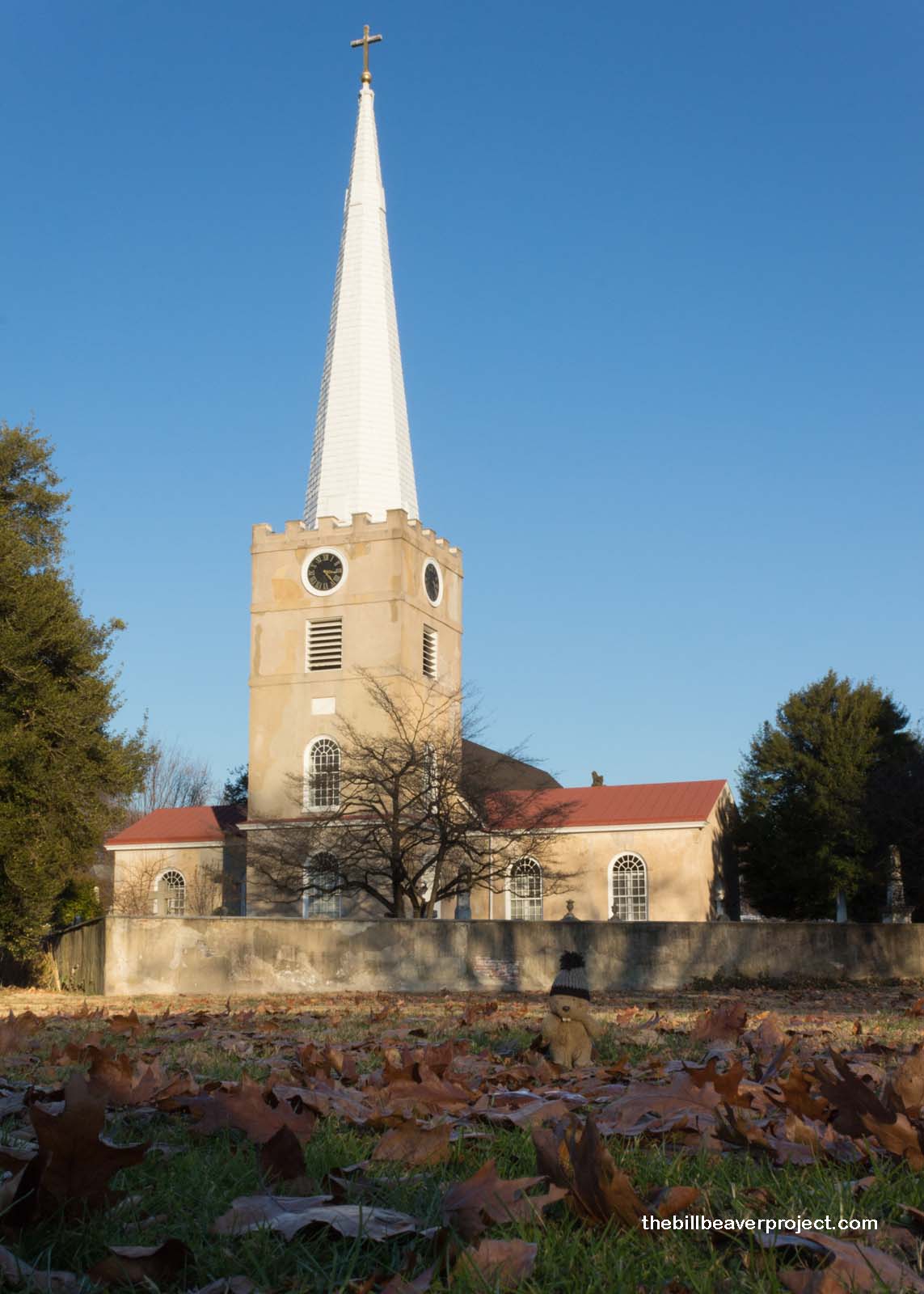 |
The Solstice was short, and I ended up returning to Philadelphia in the dark. I took a stroll down the dark, yet festive, streets, where I stumbled upon a fourth national park site: Thaddeus Kosciuszko National Memorial!
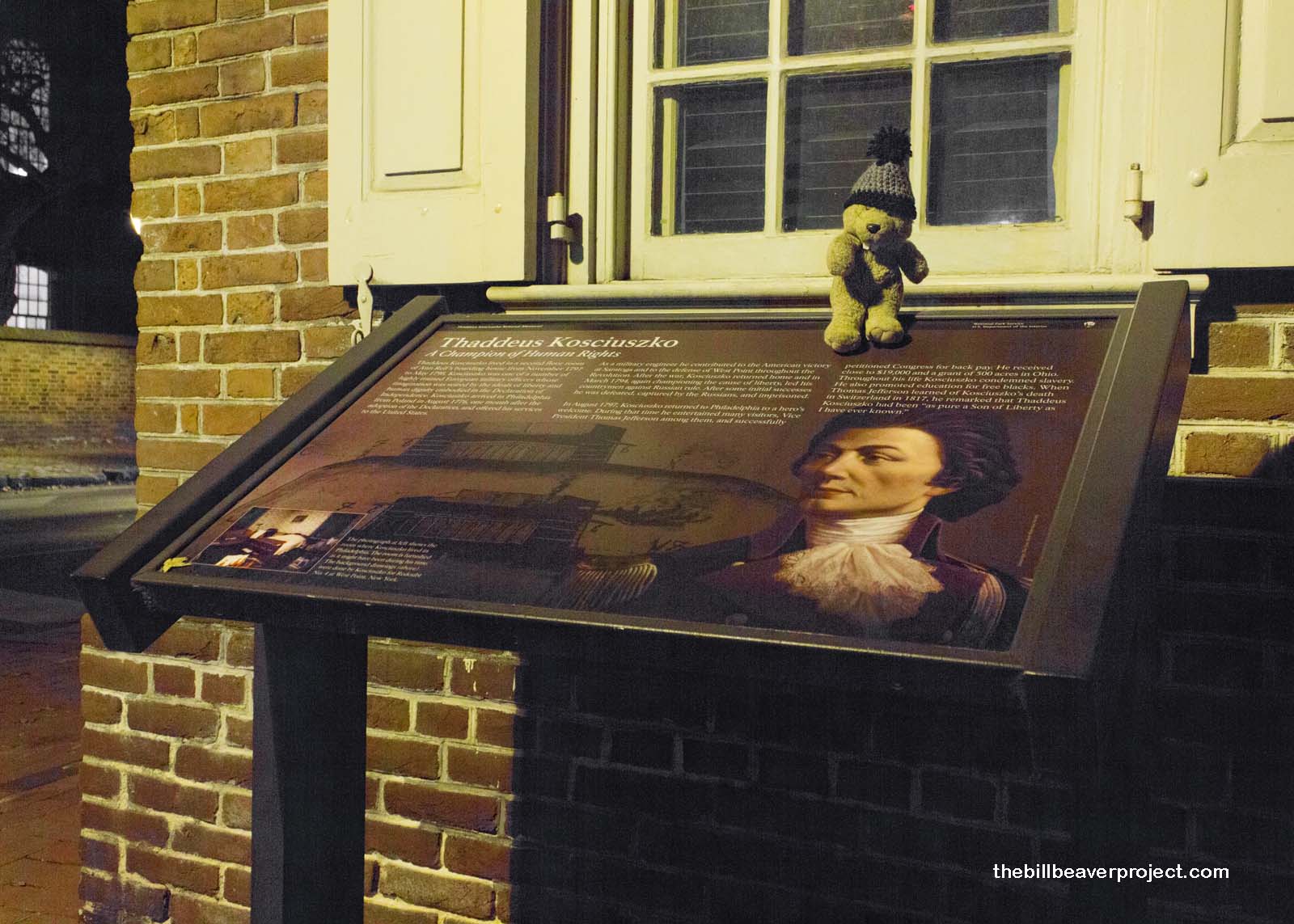 |
The home of the brilliant Polish war engineer is now the smallest of all the national park sites! During the Revolution, Mr. Kosciuszko was in charge of building fortifications, first on the Philadelphia waterfront, and later, critically, at the battlefield of Saratoga, which turned the tide of the Revolution! He returned to Poland to lead another revolution against Russia, but he was wounded and forced to return to the US. He settled here, in this home on Pine Street, where he remained a champion of freedom for the rest of his days, even using the money from his estate to buy freedom, education, and land for slaves!
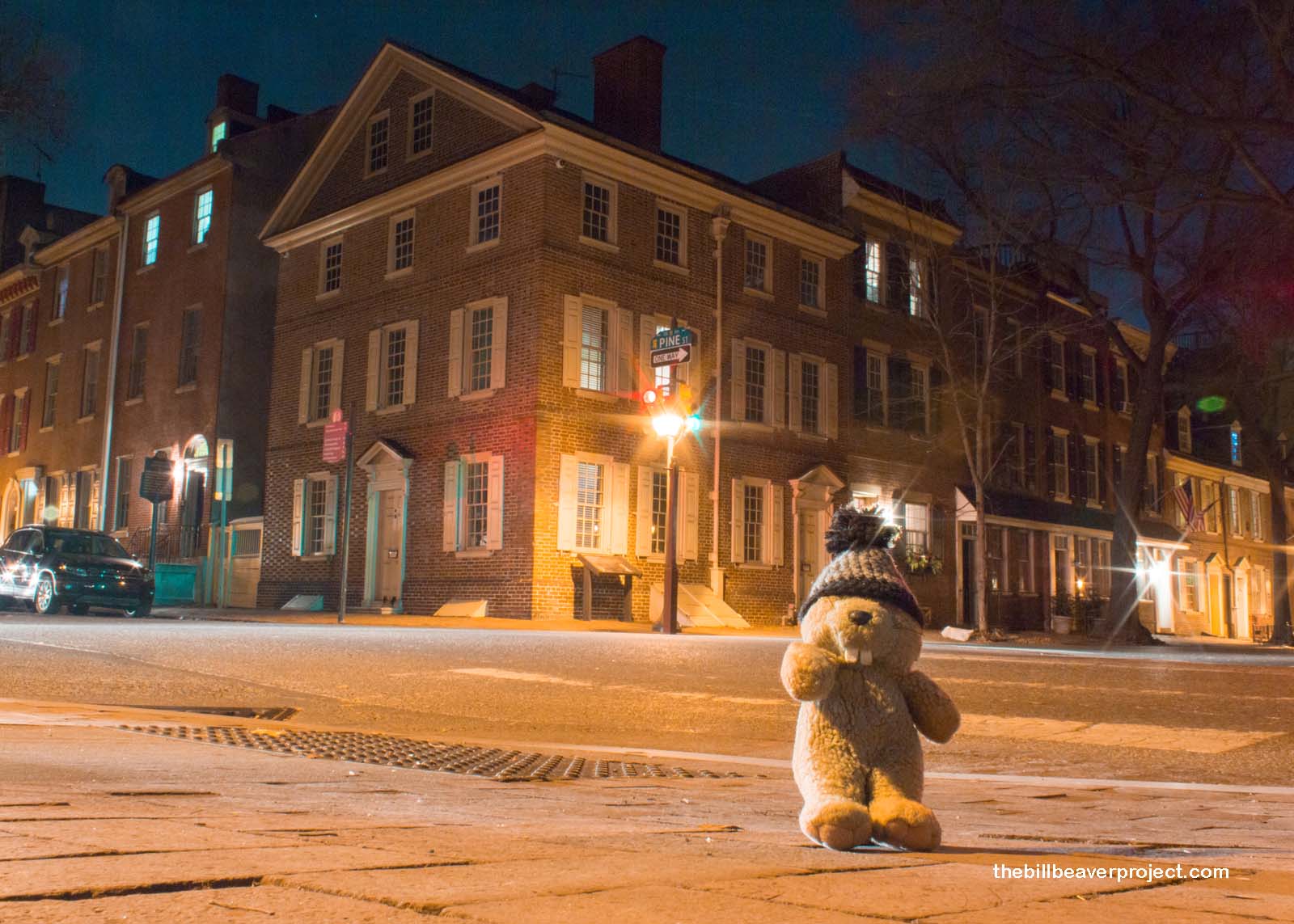 |
Whew! What a Solstice! I was completely spent from a wild cruise through history and all too ready to kick back and take it easy. I wandered the festive streets a while, grabbed some tasty Indian food from the appropriately named Indian Restaurant, located on South Street. I have one more day to look for George in the City of Brotherly Love. Even if I don’t find him, I’m so enchanted with Philly that I will surely come back some day!
Pleasant dreams!

 More 2017 Adventures |
Total Ground Covered: 103.0 mi (165.8 km) |
 Next Day |
